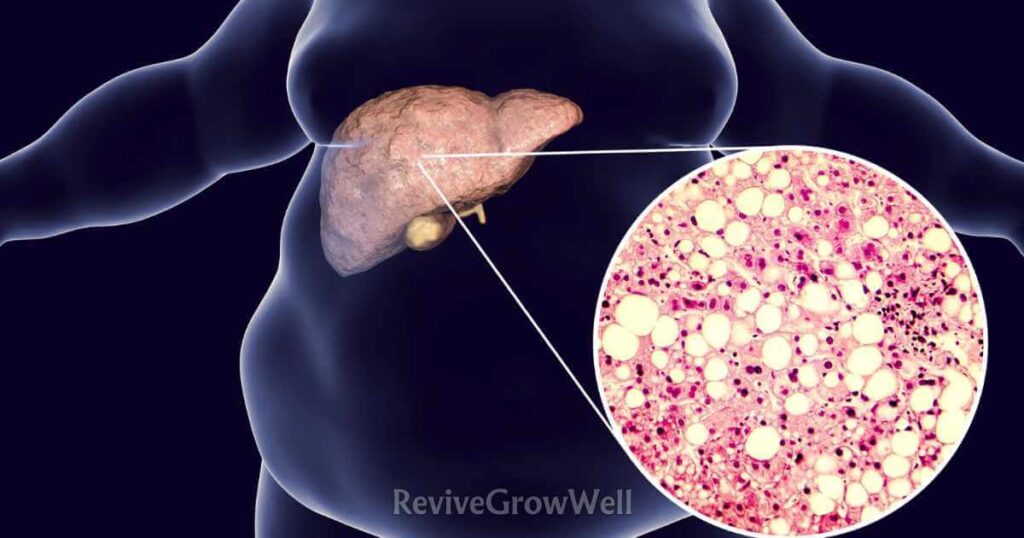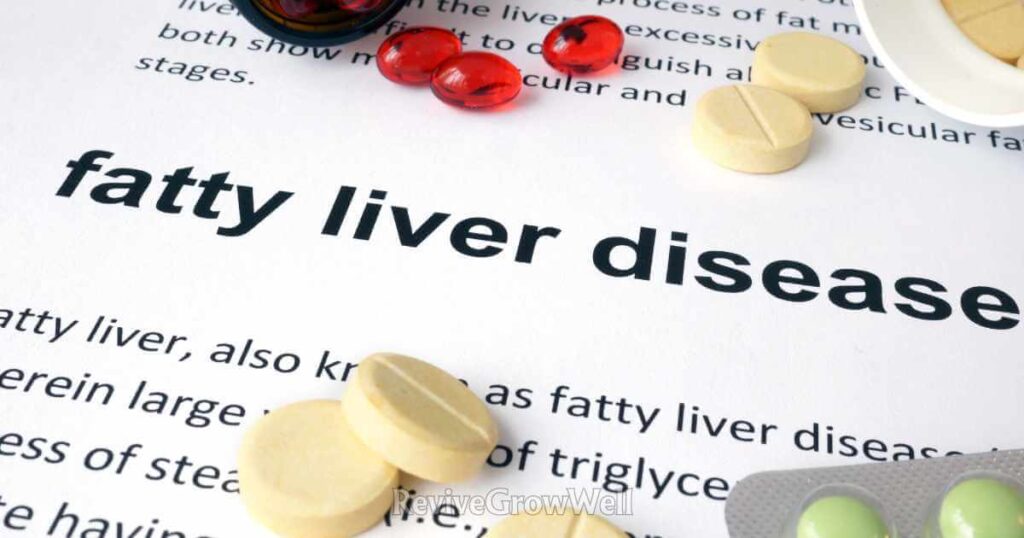Understanding Nonalcoholic Fatty Liver Disease: A Growing Concern in the Obesity Epidemic
Nonalcoholic fatty liver disease (NAFLD) has emerged as the most common chronic liver condition in recent years, driven largely by the burgeoning obesity epidemic. Alarmingly, this trend isn’t confined to adults; it has permeated into the younger population, with up to 70 to 80% of obese children now affected by fatty liver disease. This troubling statistic underscores the urgency of addressing this health crisis. But why is NAFLD so concerning? Let’s delve into the reasons.
The Silent Progression of Fatty Liver Disease
NAFLD begins innocuously enough, with fat accumulating in the liver cells. However, this seemingly benign condition can escalate into nonalcoholic steatohepatitis (NASH), characterized by inflammation and liver cell damage. NASH, in turn, can lead to fibrosis or scarring of the liver and eventually progress to cirrhosis. At this advanced stage, the liver is severely scarred, and its function is compromised, which can have devastating health implications.
Why the Rise in Obesity Matters

The correlation between obesity and NAFLD cannot be overstated. Obesity is a major risk factor for the development of fatty liver disease, as excess fat in the body contributes to fat accumulation in the liver. This relationship is particularly concerning in children, who are increasingly presenting with obesity-related health issues, including NAFLD. The long-term consequences of childhood obesity on liver health are profound, as these children are at risk of developing severe liver disease and its complications at a younger age.
Addressing the Epidemic: Prevention and Management
Combatting the rise of NAFLD in the context of the obesity epidemic requires a multifaceted approach. Public health initiatives focused on promoting healthy eating and physical activity are crucial in preventing obesity and, by extension, NAFLD. For those already affected, early diagnosis and lifestyle interventions, such as weight loss and dietary changes, are essential in halting the progression of the disease. Medical management may also be necessary for individuals with more advanced stages of NAFLD.
Summary
Nonalcoholic fatty liver disease is a significant public health concern intricately linked to the obesity epidemic. The potential for NAFLD to progress to more severe liver conditions, including liver cancer, highlights the need for increased awareness, early detection, and effective management strategies. By addressing the root causes of obesity and implementing targeted interventions, we can mitigate the impact of this growing health crisis on individuals and the healthcare system as a whole.
By understanding the gravity of NAFLD and its association with obesity, we can take proactive steps toward safeguarding liver health across all age groups.
Sources of Liver Fat in Fatty Liver Disease

Excess Dietary Sugar
Where does the fat in fatty liver disease come from? There are three main sources:
- Excess Sugar in the Diet
- Excess Fat in the Diet
- Fat from Excess Body Weight
Why is Excess Sugar Harmful?
Research has shown that too much sugar in your diet can be harmful, especially for your liver. For example, in a study where teens with fatty liver disease were put on a diet low in added sugars and sugary drinks, they showed significant improvement in just eight weeks.
Given this evidence, experts are confident in saying that excessive sugar consumption is harmful. As a result, there is a strong call to action to educate the public about the health risks associated with eating too much sugar.
Excess Dietary Fat
Why is too much dietary fat harmful? Studies have tested this, and the results are clear. When people followed the same low-calorie diet, those on a low-fat diet saw a 20% decrease in liver fat within just two weeks. In contrast, those on a high-fat diet saw their liver fat increase by 35%!
Additionally, insulin levels reacted differently depending on the diet. On the low-fat diet, insulin levels dropped by about 15%, while on the high-fat diet, they increased by 15%. This contradicts the common belief among low-carb and ketogenic diet supporters who claim that eating more fat and fewer carbs keeps insulin levels low. Actually, the research indicates that the opposite is true.
Even a single high-fat meal can increase liver fat and reduce insulin sensitivity. Within just four hours, your body’s insulin sensitivity can drop by 25%, meaning your body needs to produce much more insulin. As one editorial put it, “a single fat dose packs a punch.”
Diet Recommendations for Fatty Liver Disease
The information provided aligns with general dietary recommendations for managing or preventing fatty liver disease, particularly non-alcoholic fatty liver disease (NAFLD). The main points are summarized here:
- Limit Saturated Fats:
- Reducing saturated fat intake is recommended because saturated fats can contribute to the accumulation of liver fat, worsening fatty liver disease.
- Sources: Meat, dairy products, and certain oils like coconut oil are high in saturated fats.
- Reduce Refined Carbohydrates:
- High intake of refined carbohydrates, especially sugary beverages like soda, can lead to increased fat storage in the liver.
- Choose Unsaturated Fats:
- Unsaturated fats (found in nuts, olive oil, etc.) are considered healthier for liver function compared to saturated fats.
- Overeating any type of fat can be harmful, but unsaturated fats are less likely to lead to liver fat accumulation.
- Impact of Saturated Fats:
- Studies suggest that diets high in saturated fats can significantly increase liver fat, more so than unsaturated fats or sugars.
Weight Loss and Dietary Choices
When it comes to weight loss, certain diets can actually worsen fatty liver disease. For example, very low-carbohydrate, high-fat diets may contribute to the problem, while plant-based diets can help lower the risk. Research shows that eating more legumes—like beans, chickpeas, and lentils—can reduce the risk of fatty liver disease by up to 65%.
This study wasn’t limited to strict vegetarians, just those who included more plant-based foods in their diet. It’s harder to study strict vegetarians because they represent a small segment of the U.S. population.
But what about Indian Americans? People from the Indian subcontinent are one of the fastest-growing ethnic groups in the U.S., and many continue to follow their traditional diets, with nearly 40% being vegetarians, similar to the percentage in India. In India, nonvegetarians are at a much higher risk of developing fatty liver disease.
The same trend is observed in Taiwan, where vegetarians are less likely to develop the disease, and those who do have significantly less liver scarring. Data even suggests that swapping a serving of meat or fish with soy can reduce the risk of fatty liver by 12% to 13%.
The Impact of Vegetarian Diets in the United States
In the U.S., vegetarians tend to be slimmer, have better blood sugar levels and healthier cholesterol, and are less than half as likely to develop fatty liver disease. But does this mean a vegetarian diet directly prevents the disease? One case study showed that a patient with fatty liver disease who switched to a plant-based diet not only saw a dramatic reduction in liver inflammation but also lost about 9 pounds in just 11 days.
However, it’s hard to say whether the improvement was due to the diet or the weight loss. Rapid weight loss can be tricky because it can cause excess fat to flood the bloodstream, potentially making things worse. For fatty liver patients, a slower weight loss of about three pounds a week might be safer.
Conclusion: Plant-Based Diets and Fatty Liver Disease
Even though plant-based diets haven’t been fully tested in clinical trials for fatty liver disease, they’re still likely the best option. This isn’t just based on one case but on the fact that cardiovascular disease is the leading cause of death among fatty liver patients, not liver failure. We have solid evidence from randomized controlled trials showing that a healthy plant-based diet can reverse heart disease, opening up arteries without the need for drugs, surgery, or stents.
While fatty liver disease can lead to cirrhosis, many patients may face cardiovascular problems first. A plant-based diet could be key to improving overall health and preventing these serious complications.
Sources
At ReviveGrowWell.com, we prioritize the accuracy and reliability of our content. We base our articles on peer-reviewed research, reputable academic sources, and trusted medical journals to ensure that you receive accurate and up-to-date information. For more details on our commitment to content quality and credibility, please refer to our editorial policy.
- Saturated vs. Unsaturated Fats:
- Zelber-Sagi, S., et al. (2019). The role of diet in prevention and treatment of non-alcoholic fatty liver disease: A review of the literature. Nutrients, 11(10), 2254. Link.
- Refined Carbohydrates and Liver Health:
- Volynets, V., et al. (2016). Nutrition, intestinal permeability, and blood glucose: A systematic review of dietary influences on gut barrier function and metabolism. Advances in Nutrition, 7(4), 773-783. Link.
- Overall Dietary Guidelines for Fatty Liver:
- Eslamparast, T., et al. (2015). Dietary patterns and non-alcoholic fatty liver disease: A review. World Journal of Hepatology, 7(10), 1643-1653. Link.
- Source of Liver Fat and Sugar’s Role:
- Bellentani, S., & Scaglioni, F. (2015). The epidemiology of non-alcoholic fatty liver disease: A global perspective. Journal of Hepatology, 62(1), S47-S64. Link.
- Effect of Low-Sugar Diet on Fatty Liver in Teens:
- Schwimmer, J. B., et al. (2019). Effect of a low free sugar diet vs usual diet on nonalcoholic fatty liver disease in adolescent boys: A randomized clinical trial. JAMA, 321(3), 256-265. Link.
- Editorial on the Harmful Effects of Excess Sugar:
- European Association for the Study of the Liver (EASL). (2018). EASL Clinical Practice Guidelines on diet and alcohol-related liver disease. Journal of Hepatology, 68(2), 311-318. Link.
FAQ: Ancient Grains in a Healthy Cereal
The best diet for fatty liver disease focuses on reducing saturated fats, refined sugars, and increasing plant-based foods. Incorporating legumes, whole grains, vegetables, and fruits can help reduce liver fat.
Yes, weight loss can significantly help in treating fatty liver disease. Losing about 3 pounds per week is considered safe for liver health, preventing the rapid release of fats into the bloodstream.
A low-fat diet has been proven to decrease liver fat by up to 20% in just two weeks. It also helps lower insulin levels and improves overall liver function.
A plant-based diet reduces the risk of fatty liver disease by improving cholesterol levels, blood sugar, and promoting weight loss. It is also associated with a reduced risk of liver scarring.
Yes, studies show that high-fat diets can increase liver fat by up to 35% and elevate insulin resistance, making it harder for the liver to function properly.
Vegetarians are at a lower risk of developing fatty liver disease. Research indicates that replacing meat with plant-based proteins like soy can lower the risk of liver fat accumulation.
Excess sugar consumption, especially from sugary beverages, is a significant contributor to liver fat. Reducing sugar intake can improve liver health in as little as eight weeks.
Rapid weight loss can cause an excess release of fats into the bloodstream, potentially worsening fatty liver disease. A gradual, steady weight loss is recommended for better results.
Yes, obesity is a major risk factor for fatty liver disease, with a higher prevalence seen in obese children and adults due to the excess fat stored in the liver.
Non-vegetarians, especially those who consume high-fat animal products, have a significantly higher risk of developing fatty liver disease compared to vegetarians.



























1 thought on “The Best Diet for Fatty Liver Disease Treatment”
You have made some really good points there. I checked
on the net for additional information about the issue and found most individuals will
go along with your views on this web site.